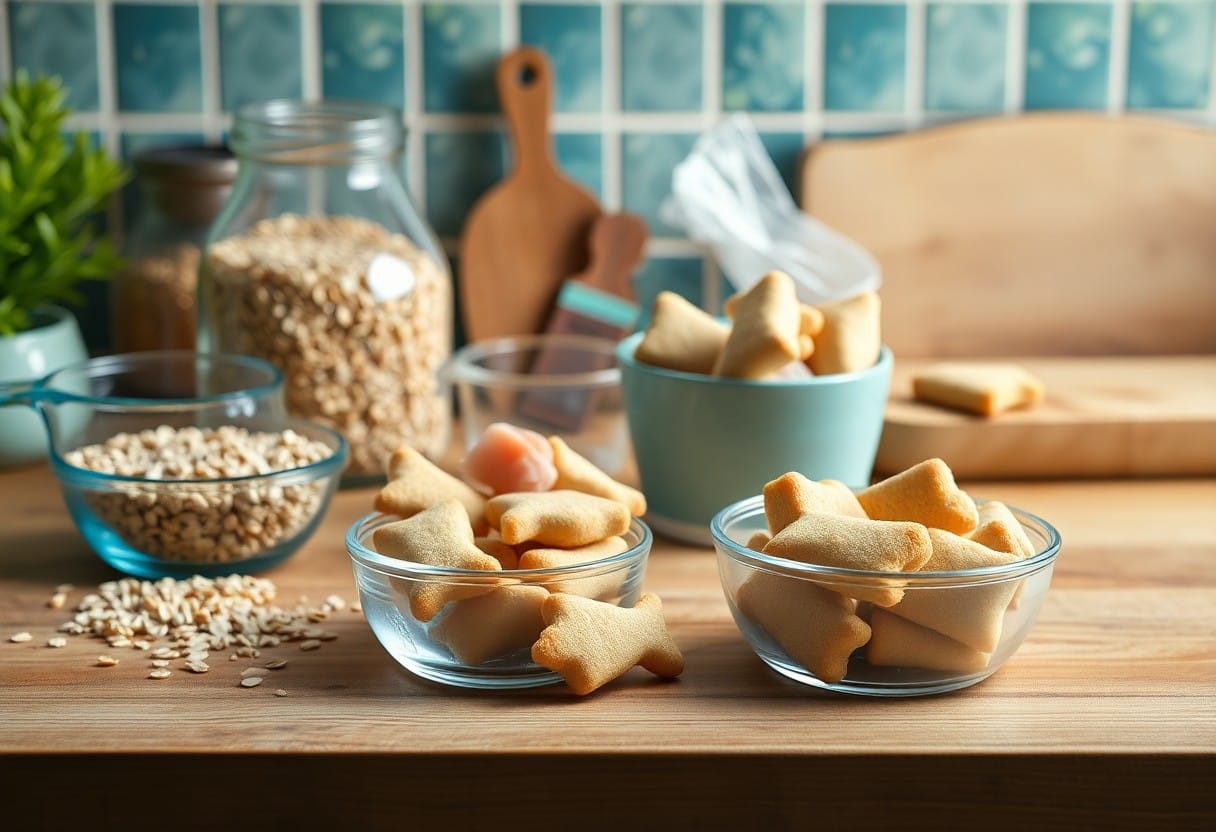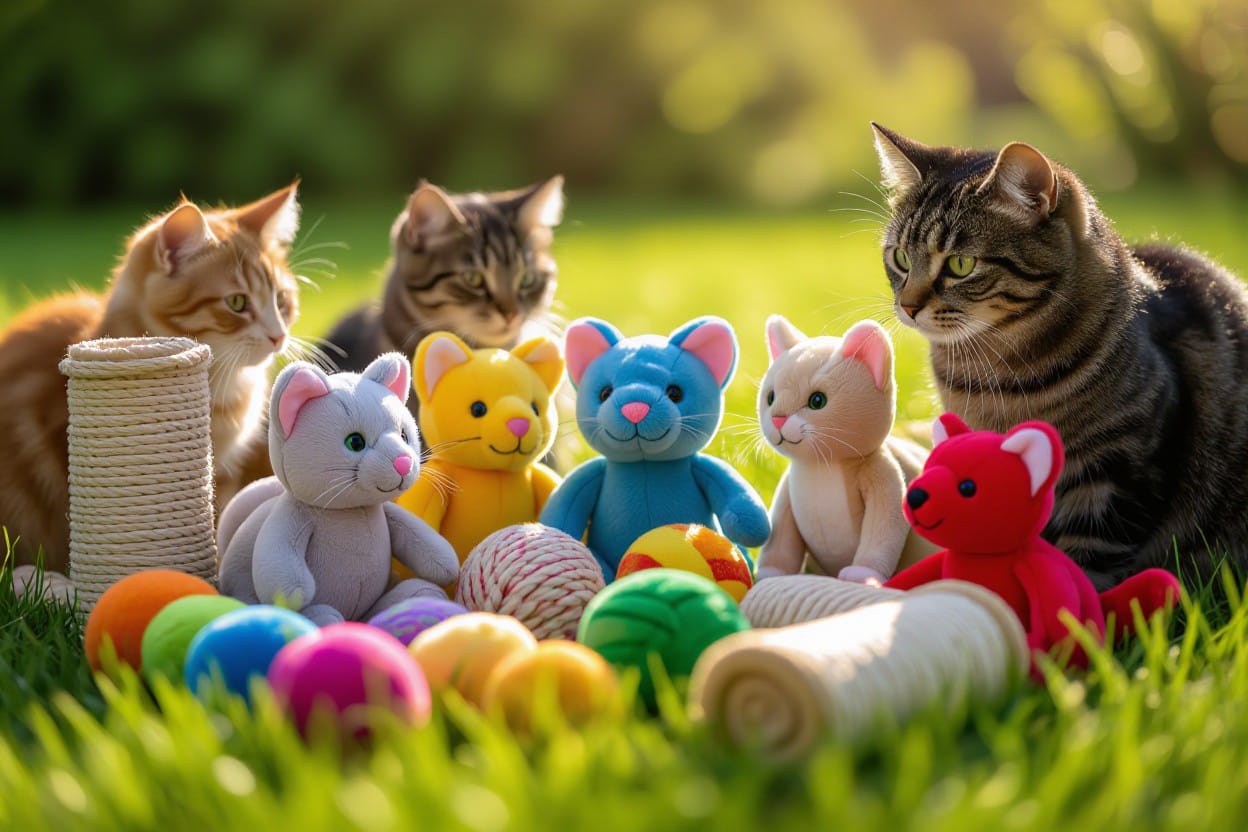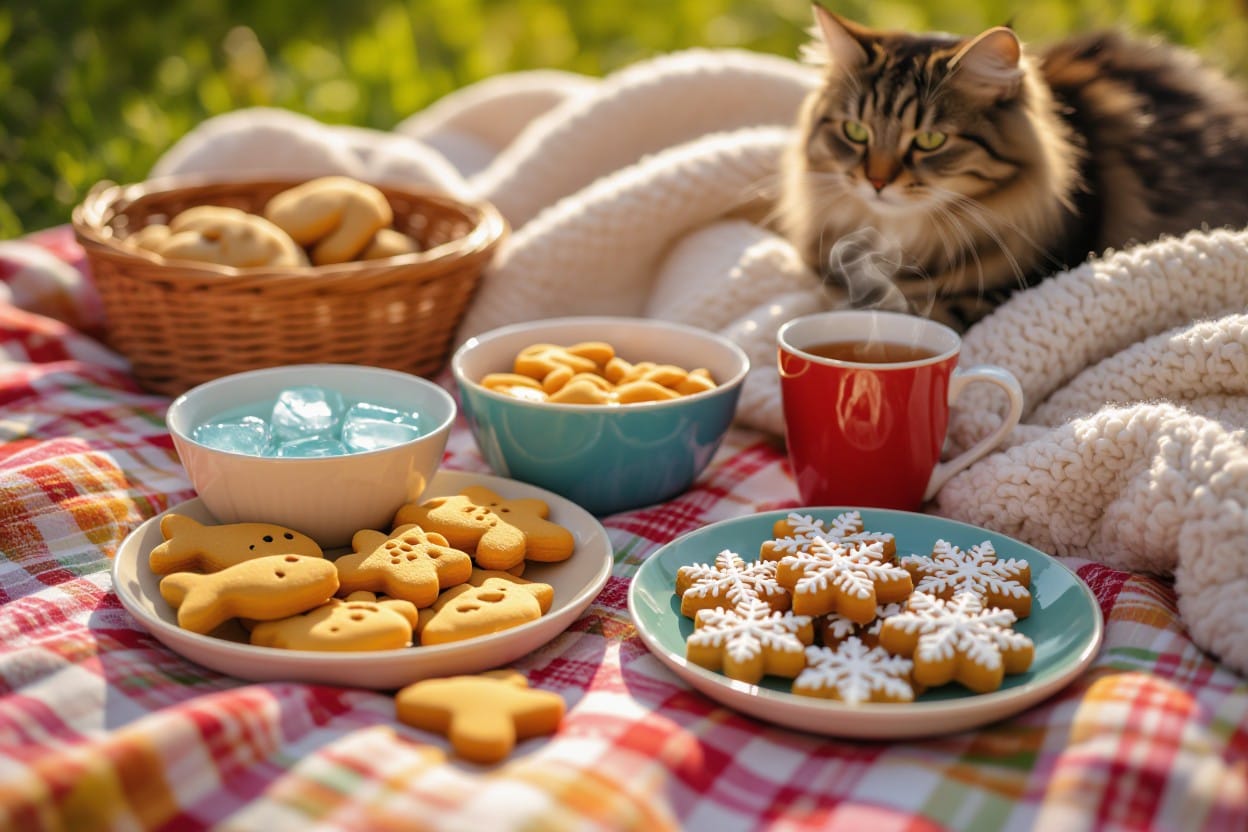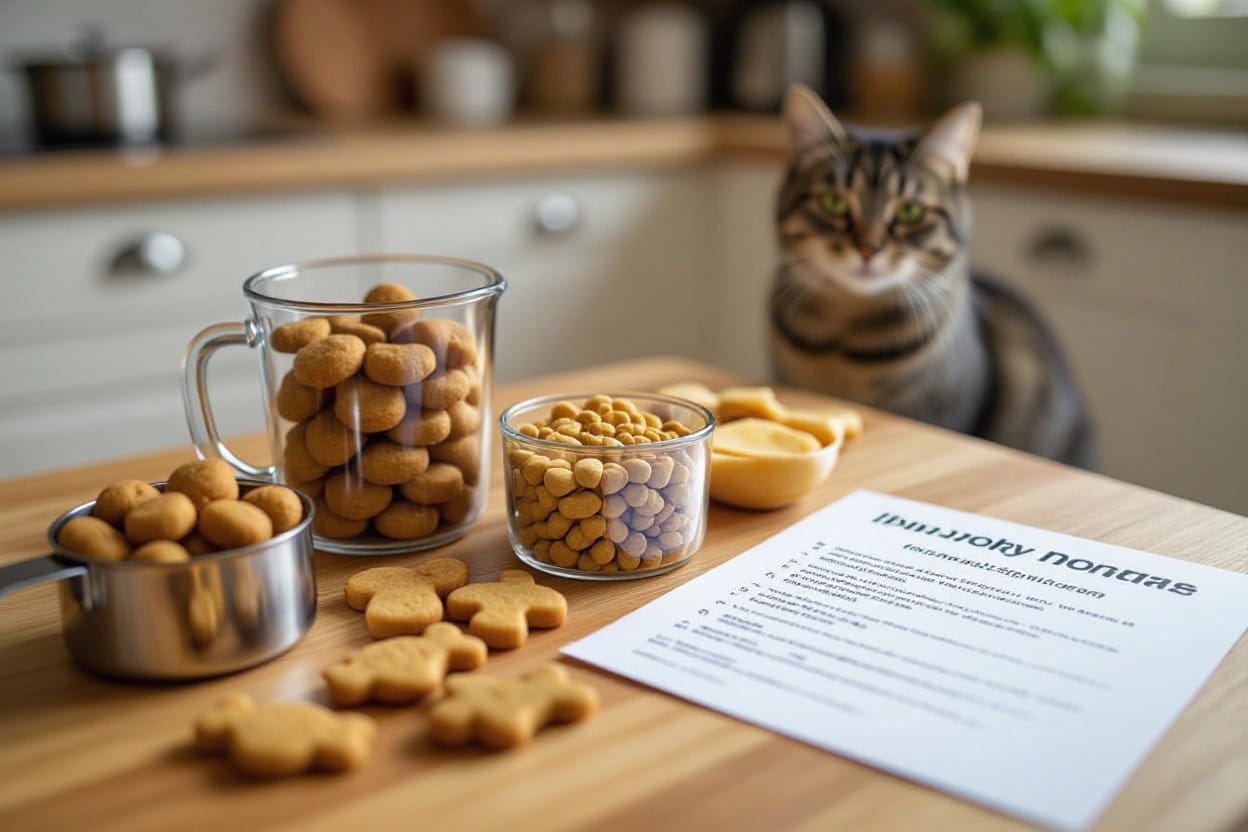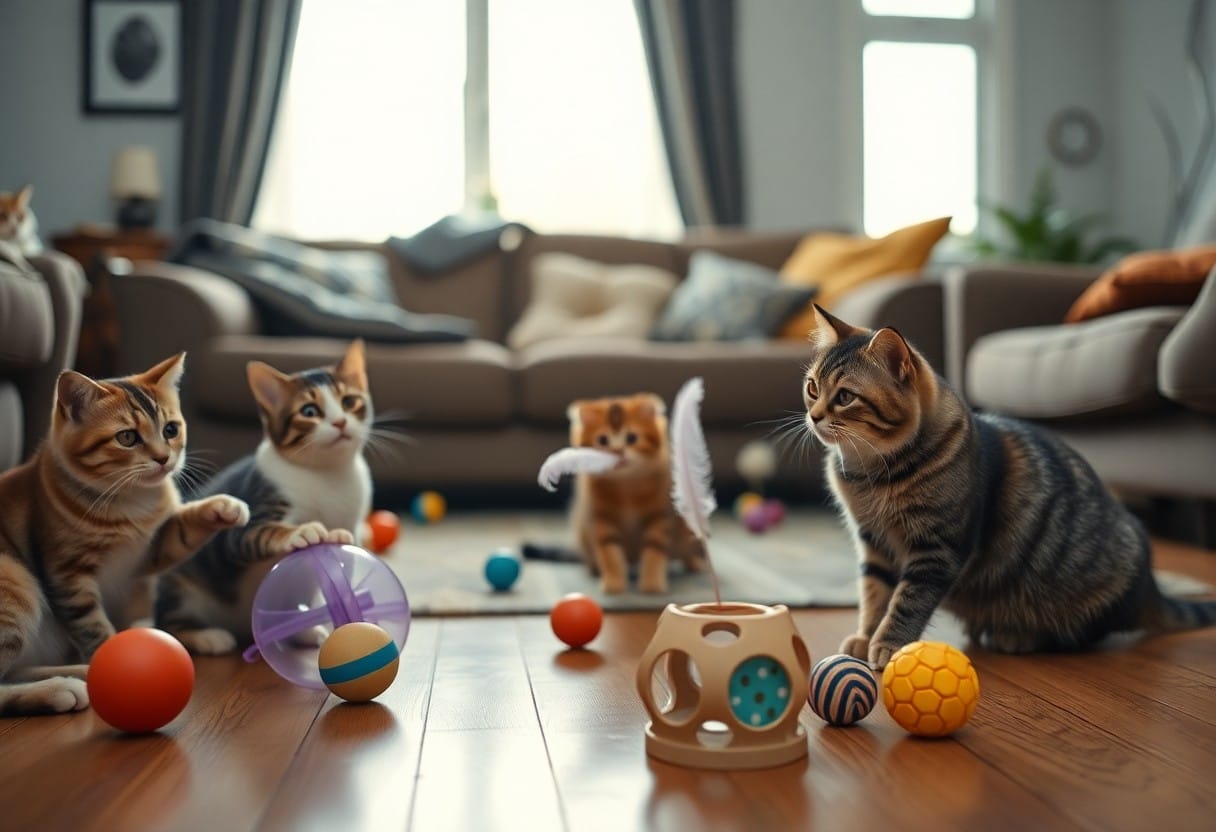This post will guide you through the process of making wholesome and delicious treats for your feline friend right in the comfort of your kitchen. You’ll learn how to select safe ingredients that cater to your cat’s dietary needs, while also keeping it fun and engaging. With simple recipes and tips, you can ensure your cat enjoys tasty snacks that are beneficial for their health. Get ready to impress your pet and enhance their diet with treats that are both nutritious and satisfying!
Key Takeaways:
- Choose wholesome ingredients, like lean meats, fish, and vegetables, to ensure that your cat receives balanced nutrition while enjoying their treats.
- Incorporate herbs such as catnip or parsley to add flavor and appeal, making the treats more enticing for your feline friend.
- Experiment with different textures and shapes, using molds or cutting into fun shapes, to keep mealtime exciting and engaging for your cat.
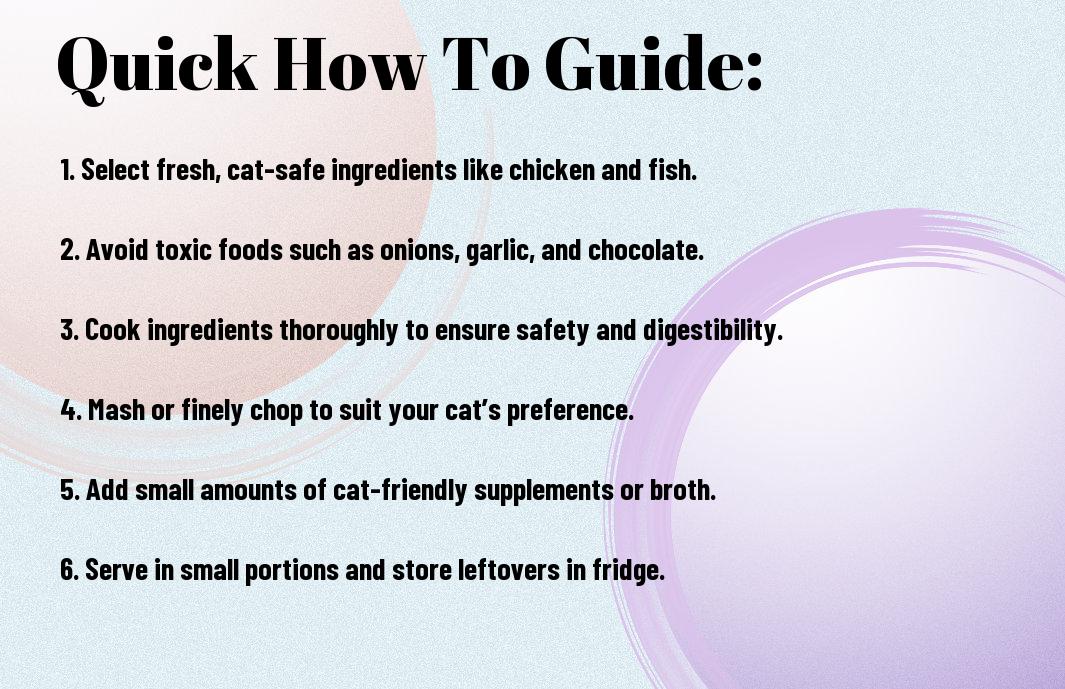
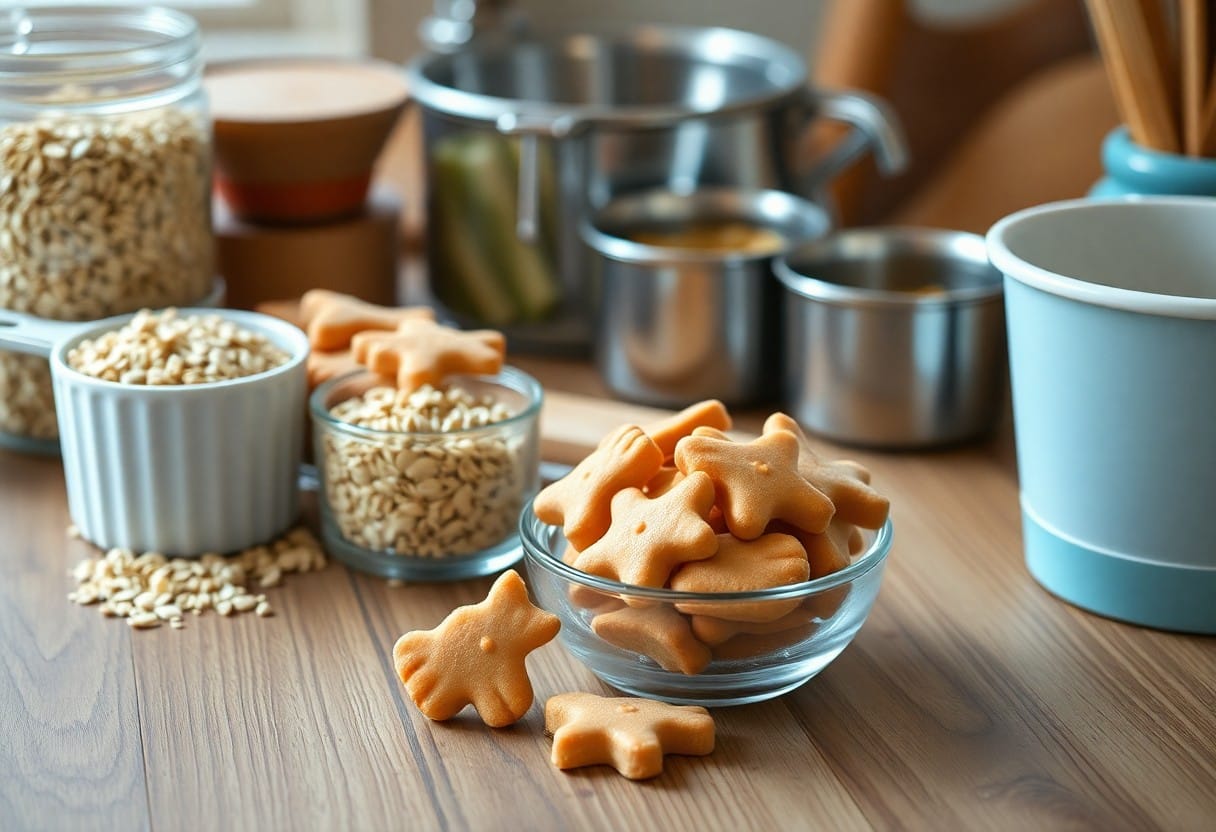
Understanding Your Cat’s Nutritional Needs
To ensure your cat thrives, it’s necessary to understand their nutritional requirements. Cats are obligate carnivores, meaning their diet must primarily consist of meat. Balance is key; they require specific levels of proteins, fats, vitamins, and minerals to maintain optimal health. By focusing on whole, high-quality ingredients, you can create nutritious treats that cater to your feline’s unique needs.
Key Nutrients for Cats
Your cat’s diet should be rich in high-quality protein, necessary fatty acids, vitamins, and minerals. Proteins are vital for muscle development and overall health, while fats provide energy and support skin and coat health. Ensure that your homemade treats contain the right balance of these key nutrients to keep your cat healthy and happy.
Common Cat Food Ingredients to Avoid
Even though it can be tempting to use common kitchen items, some ingredients can be harmful to your cat. Certain foods, like onions, garlic, chocolate, and alcohol, can cause severe health issues. Always research the safety of any ingredient before including it in your cat’s diet to ensure you are providing them with safe and nutritious treats.
Avoid ingredients that are toxic to cats, such as onions, garlic, chocolate, and alcohol. These foods can lead to serious health problems, including anemia, gastrointestinal upset, and organ failure. Additionally, steer clear of fillers like corn and wheat, as they provide little nutritional value. Opt for fresh, natural ingredients to create safe and healthful treats for your feline companion.
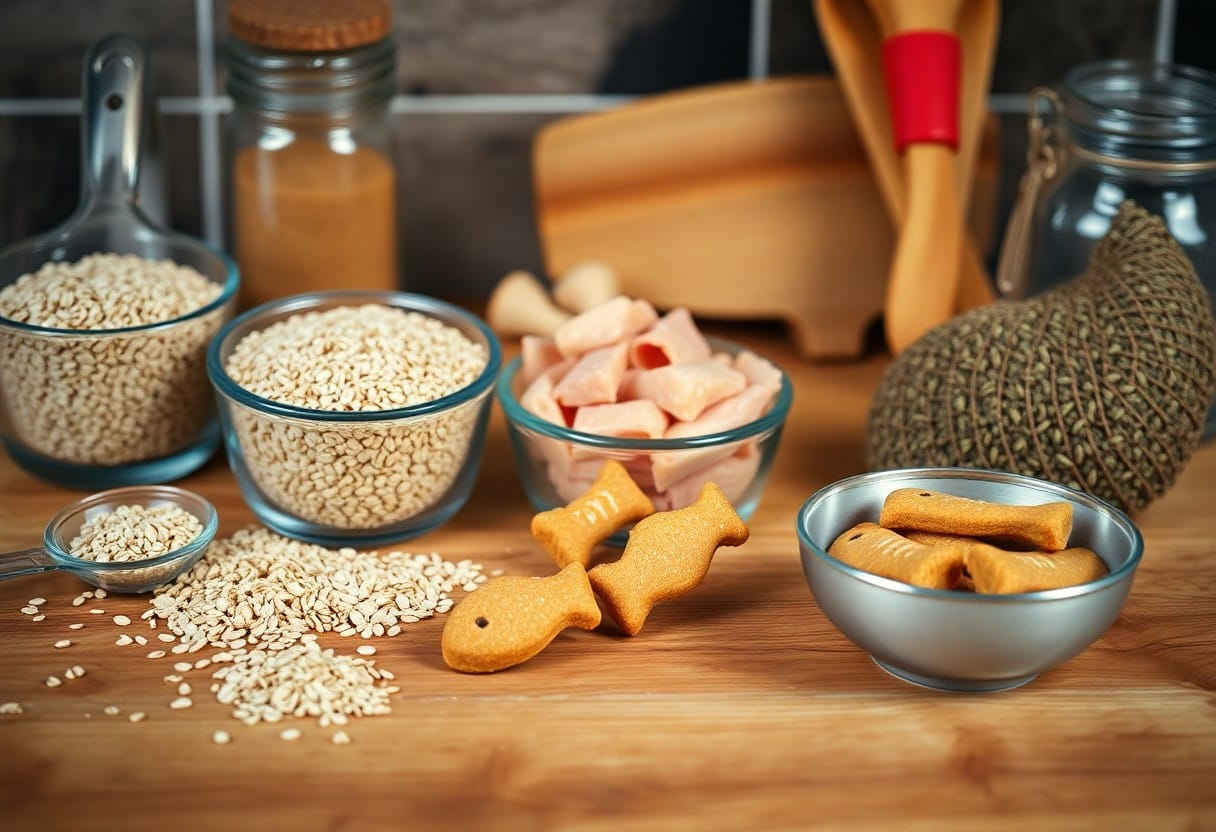
Tips for Selecting Ingredients
If you want to create the best treats for your feline friend, selecting the right ingredients is key. Focus on high-quality meat sources, wholesome grains, and fresh produce. Keep an eye out for ingredients that are:
- Free from artificial additives
- Rich in imperative nutrients
- Tailored to your cat’s dietary needs
Assume that your choices will greatly affect the taste and health benefits of the treats you make.
Fresh vs. Processed Ingredients
If you’re choosing between fresh and processed ingredients, opt for fresh whenever possible. Fresh ingredients often contain more nutrients and flavor compared to their processed counterparts. Your cat will appreciate the natural taste, and you’ll feel good knowing you’re providing a healthier option.
The Benefits of Organic Options
Ingredients that are certified organic can contribute positively to your cat’s diet. You can ensure that their treats are free from harmful pesticides and chemicals, which are often present in non-organic products. Organic options tend to be more nutritious, as they are grown without synthetic fertilizers and typically have a higher nutrient density.
Benefits of choosing organic ingredients include improved overall health for your cat and a reduced risk of exposure to harmful chemicals. By opting for organic, you’re also supporting sustainable farming practices that promote a cleaner environment. Additionally, organic ingredients can enhance the flavor and nutritional value of your homemade treats, making them a delightful choice for your furry companion.
How to Make Simple Treats at Home
After gathering your ingredients, making simple cat treats at home is an enjoyable and rewarding process. Just a few basic components and some creativity can lead to delightful snacks your feline friend will adore. Start with a nutritious base like oatmeal or chicken, and combine it with flavors your cat loves, such as fish or catnip, for an irresistible treat that’s both healthy and tasty.
Easy Recipes for Homemade Cat Treats
You can create a variety of delicious homemade cat treats with minimal effort. Try blending canned tuna with whole wheat flour and an egg to make easy fishy bites, or mix cooked chicken with pumpkin puree and oats for a savory delight. These simple recipes ensure your cat enjoys nutritious snacks tailored to their tastes.
Tips for Storing and Serving Treats
To keep your homemade cat treats fresh, store them in an airtight container in a cool, dry place. Consider freezing extras for longer preservation, but allow them to thaw before serving. Serve treats in moderation to maintain your cat’s health, and always supervise your cat while enjoying their new snacks. Here are some tips to ensure best results:
- Store in a cool, dry place
- Use airtight containers to maintain freshness
- Freeze for longer shelf life
Knowing proper storage helps enhance your cat’s snacking experience.
It’s imperative to provide your cat with fresh homemade treats since some can quickly spoil. Avoid leaving them out for extended periods and always check for signs of spoilage before serving. Regularly clean any containers to prevent mold or bacterial growth, and tailor the size of the treats to your cat’s size to prevent choking. Here are a few more tips:
- Avoid using harmful ingredients like onion or garlic
- Use trusted recipes for ingredient safety
- Introduce new treats slowly to monitor for allergies
Knowing these guidelines ensures safe and enjoyable treat time for your furry friend.
Factors to Consider for Treat Variety
Once again, selecting the right variety of treats for your cat hinges on several factors to keep them happy and healthy. Consider the following:
- Age – Treats suitable for kittens differ from those designed for seniors.
- Activity Level – Your cat’s energy level can influence their caloric needs.
- Health Conditions – Be mindful of any specific health issues.
- Preference – Cats have individual tastes, so variety is necessary.
This approach will help you create a balanced treat assortment that your feline friend will adore.
Incorporating Different Textures and Flavors
Any successful treat should incorporate a range of textures and flavors to keep your cat engaged. Offer crunchy treats for dental benefits, alongside softer options for a different experience. Mixing flavors helps cater to their evolving tastes and encourages exploration. Variety not only makes treat time exciting but also introduces an array of nutrients that can be beneficial for your cat’s well-being.
Allergen Awareness and Dietary Restrictions
There’s a significant need for awareness regarding allergens and dietary restrictions when crafting your cat’s treats. Be sure to identify any food allergies your cat may have before selecting ingredients, and avoid common irritants like chocolate and garlic. Additionally, consider any special diets your cat may require, ensuring that treats align with their overall health needs. Knowledge of these factors ensures you provide them with safe and enjoyable snacks.
Incorporating attention to your cat’s dietary needs can make a positive difference in their overall health. Start by providing ingredients that are not only safe but also beneficial. Pay close attention to ingredients that are toxic to cats, such as onions and grapes, as well as those that may be common allergens, like dairy and wheat. By being aware of your cat’s unique dietary restrictions and food sensitivities, you contribute to their quality of life while crafting delightful and enjoyable treats.

Enhancing Treats with Nutritional Supplements
Now that you’ve crafted delicious treats for your feline friend, consider enhancing their nutritional value with appropriate supplements. Adding nutritional boosters can provide necessary vitamins, minerals, and fatty acids, ensuring your cat gets a well-rounded diet while indulging in their favorite snacks. To make the most of these enhancements, always choose products specifically developed for cats to ensure safety and effectiveness.
Safe Supplements for Cats
Assuming you want the best for your cat, you should focus on vet-approved supplements that are both safe and beneficial. Omega fatty acids, taurine, and probiotics are excellent choices, promoting healthy skin, a shiny coat, and optimal digestion. Avoid human supplements or those containing harmful ingredients that can jeopardize your pet’s health.
Balancing Flavor and Nutrition
Even when incorporating supplements, it’s vital to keep the flavor appealing. Cats are notoriously picky, so combining tasty ingredients while adding nutritional boosts can be a bit of a tightrope walk. Strive for a balance by using natural flavors, such as chicken or fish, along with supplements that don’t alter the taste dramatically.
With a little creativity, you can craft treats that are both delicious and nutrient-rich. Try incorporating small amounts of flavored powders—like chicken or tuna—along with omega-3 oils or other supplements to keep your cat excited about treat time. Pay attention to your cat’s reaction; if they’ve shown strong preferences, adjusting your recipe to include their favorite flavors will keep them engaged. Overall, when you prioritize both flavor and nutrition, you’re setting your cat up for a happier and healthier life.
Designing a Treat-Making Routine
Your treat-making routine can greatly enhance your cat’s mealtime experience while providing them with nutritious snacks. Having a set schedule allows you to prepare and store treats consistently, keeping your furry friend excited and engaged. By incorporating this routine into your weekly activities, you’ll ensure that your cat receives fresh and wholesome treats that cater to their individual taste preferences.
Scheduling Treat Preparation
Even a short time set aside each week for treat preparation can lead to an enjoyable and rewarding experience for you and your cat. Choose a day that works best for your schedule, and allocate an hour or so for creating a variety of treats. This consistent approach makes it easier to keep healthy snacks on hand and helps establish a fun culinary adventure for you both.
Engaging Your Cat in the Process
Process your cat’s natural curiosity and playful personality by involving them in the treat-making process. They will likely want to supervise and, who knows, even “assist” you as you prepare their special snacks! By engaging your cat, you not only make them feel included but also strengthen your bond during this delightful activity.
To effectively engage your cat in the process, set up a safe area where they can observe while you work. Use catnip, treats, or interactive toys to keep them entertained while you prepare. Keep in mind that certain ingredients can be harmful, so always prioritize their safety. If possible, let your cat taste small amounts of harmless ingredients as you go along, encouraging their interest in the outcome. Involving them in the experience will boost their enthusiasm for homemade treats and help them feel more connected to you during mealtime.
Summing up
Taking this into account, crafting nutritious and tasty treats for your cat at home is a rewarding way to ensure your furry friend enjoys healthy snacks tailored to their preferences. By using wholesome ingredients and following simple recipes, you can provide your cat with a delightful variety of flavors and textures. Always prioritize your cat’s dietary needs and consult with your veterinarian if you’re unsure about specific ingredients. With a little creativity and care, you’ll create treats that not only pamper your pet but also contribute to their overall well-being.
FAQ
Q: What ingredients should I use to make nutritious treats for my cat?
A: When crafting nutritious treats for your cat, focus on lean meats such as chicken, turkey, or fish, as these are excellent sources of protein. You can also include small amounts of cooked vegetables like carrots or peas, which can provide fiber and necessary nutrients. Additionally, consider incorporating cat-friendly herbs like catnip or parsley. Avoid using ingredients that are toxic to cats, such as onions, garlic, and chocolate.
Q: How can I ensure the treats I make are tasty and appealing to my cat?
A: To make sure your homemade treats are tasty for your cat, consider using ingredients that are already favorites. Cats typically enjoy flavors such as chicken, tuna, and liver. You can enhance the taste by baking the treats until they’re slightly crispy or incorporating a bit of fish oil for an added flavor boost. Experimenting with different textures and shapes can also entice your cat to try them. Always observe your cat’s reactions to new flavors and textures, and adjust your recipes accordingly.
Q: How do I store homemade cat treats to keep them fresh and safe for my cat?
A: Storing your homemade cat treats properly is key to ensuring their freshness and safety. After batch-making them, let the treats cool completely before placing them in an airtight container. For short-term storage (up to a week), keep them in a cool, dry place. If you want to preserve treats for longer, you can freeze them in small portions. Just be sure to label them with a date, and always thaw them safely before giving them to your cat. Regularly check for any signs of spoilage or changes in texture or aroma before offering the treats to your feline.
